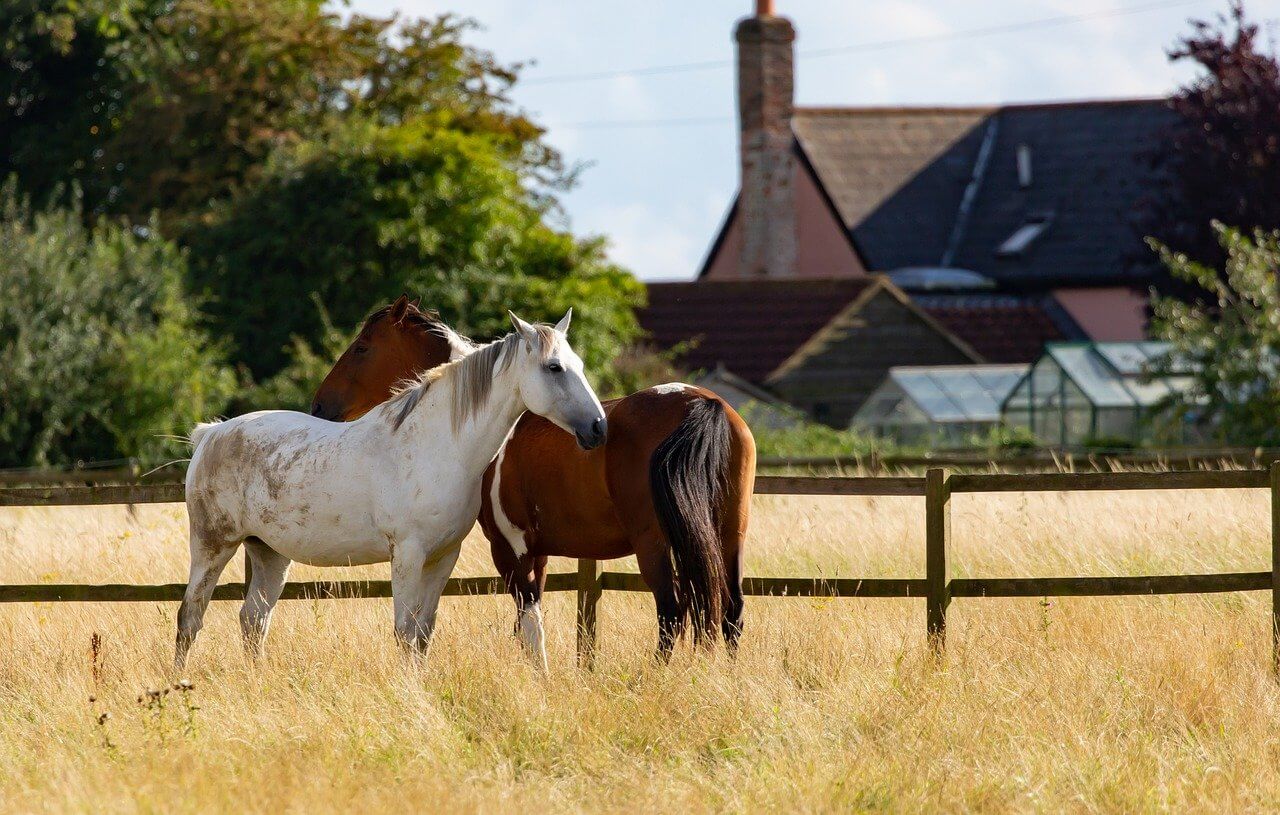If you’ve never written a business plan before, it can seem quite daunting and could leave you feeling more than a little overwhelmed. In this article, we will look at how to break it down step by step into simple, manageable chunks. Then you’ll soon see how to write a farm business plan without stress.
What You'll Learn Today
What is a Business Plan?

A business plan is a document that provides a road map to clearly define your proposed farming business in detail. It helps you to decide how you will do specific things such as locate, fund, sustain and grow your venture.
You will also be able to state your ambitions, and how you envisage achieving them, and when. You’ll need to look at viability, the size of the market, any competitors you’ll have, and the predicted future growth of the industry you’re interested in.
The choices are vast. It could be raising chickens, growing specialized crops, or micro-farming.
A good business plan should be:
- Easy to follow
- Realistic
- Comprehensive
- Detailed
Why Do I Need a Business Plan?

A well-written business plan not only increases your chances of getting additional funding, such as loans or grants but also gives you a way to ensure all your goals are being met as you go along.
Having a detailed document to follow as a guide helps you stay on course and provides a greater chance of success.
By charting an ideal course of action, you may discover things you hadn’t initially thought of. These might be additional ways of making your enterprise profitable or finding potential pitfalls before you’ve invested a single dime.
If, for example, your farm is reliant on producing a specific crop that depends on a long growing season, you need to figure out what happens if it fails. Certain things, such as the weather, are completely out of our control.
It could be that you can’t rely on just growing one thing and need to grow additional crops that don’t depend on the same conditions or diversify in some other way. Many small farmers increase their revenue by adding other strings to their bow and diversifying.
Another consideration is, just because the market you’re interested in is strong right now, it doesn’t mean it will continue to be so. A business plan lets you decide what you would do if there was a dramatic drop in demand/income.
As well as planning for the worst, you’ll also be able to decide what you’d do if things go better than expected. Should your chosen farming idea flourish and you can’t keep up with demand, what happens then? A plan would help you know how best to expand under these circumstances.
Without a solid plan for your farm, you won’t be able to secure any help in the form of grants or loans, and you never know when a cash injection might be needed down the line.
How Do I Write a Small Farm Business Plan?
To write a successful business plan, you’ll first need to do a lot of research. This involves investigating how all aspects of your project will work by looking at how it is achieved by others.
If you want to apply for grants or loans, find out precisely what information they will need before you start. That way, you won’t need to do a load of extra work later on.
Talk to professionals; this could be farming associations, other farmers in your area of interest, banks, government offices, potential customers, machine manufacturers, breed societies, anyone who can give you concrete facts about what you want to do.
In this short video, the basics of how to write a farm business plan are explained.
When you start writing your plan, be sure you have all your ducks in a row and know very clearly in your mind how you envisage things working. Break it down into its component steps to make it easier to write.
What Are The Steps In Planning Farm Business
You’ve done all your research, and you’re ready to start writing, but what do you need to include and in what order?
In truth, there are a multitude of ways to write a farm business plan, and none is more correct or better than another. The key is to ensure you have as much detailed information as possible to follow in the future or use to gain funding.
1. Executive Summary
An executive summary is usually written last but appears first in your finished document.
It summarizes the expectations you have about what you are aiming to accomplish.
It should be a compelling read that reveals your mission statement and gives a brief description of the farming you will be doing and what products you will be producing.
You can also include why you want to start your farm, what your inspiration is and what background experience or training you have.
2. Business Description
Here you give a detailed description of your farming goals, who you will be serving, and why you stand out from your competitors. Include any notable strengths, differences, unique solutions, competitive advantages – anything that will give you an edge.
3. Market Analysis
In this section, you need to show how the specific type of farming you will be doing works. Substantiate the strengths you talked about in the farm description by detailing statistics, market trends, and any other proof that your idea is viable.
Discuss how similar businesses are doing and how they succeed. Identify your market, who will buy what you’re selling, and why they want to get it from you.
Figures count, so be sure to include as much detail about what profits can be reasonably expected as possible.
4. Competitors
All businesses have competitors, and farming is no different. If there are already much larger farmers offering the same things in your area, it will be hard to compete. It’s better to look for a niche market that is needed but not catered for.
In your business plan, you should state who your competitors are and list their strengths and weaknesses. You must demonstrate exactly how you are going to be successful when competing against them.
5. Products and Services Breakdown
In the business description, you gave an overview of what products and services you would be offering. Now it’s time to expand on that and provide more details about what you’ll be selling. Don’t forget to include how much, who to and why what you have to offer is needed.
You also want to show which suppliers you’ll be using (feed, seed, equipment, etc.), what you will be buying, and the costs involved.
6. Marketing & Sales
What you’re selling was outlined in 5 above, but here you need to explain how you’ll find customers for your produce. Will you, for example, have a stall at various farmers’ markets? Or perhaps sell a specialty plant for making a valuable essential oil to a specific manufacturer?
List all the methods you’re intending to use to promote and sell the produce and ensure you create a realistic budget to go with it.
Will you be doing your own marketing and sales, or will you get someone to do it for you? Do you need to build and manage a website, social media accounts, or direct marketing materials?
It’s one thing to produce a product to sell, but it’s another thing to actually get anyone to buy it. For this, good marketing is key.
7. Organizational Structure
In this element, you describe how your farm will be run. Will it be just you doing everything, or will you have family or employees to help?
If you do take people on, will they be part-time or full-time? Employed or casual? Seasonal or long-term?
What skills will the people you take on have? What will their responsibilities be? What will the chain of command look like? All of these things will need to be talked about in detail.
Will your farm be run as a sole trader proprietorship, a partnership, or something else? How will this work and why are you choosing that particular setup.
8. Funding
It’s very usual for some level of additional funding to be needed. Agricultural machinery, land, buildings, animals, seed, and so on can all be costly.
In this part of your business plan, you need to focus on how much it will take to set up your farm and where your starting capital is coming from. Will you invest your own money or require it from an outside source?
It’s a good idea to include some kind of timeline that shows when additional funding may become necessary to grow the business, or buy new equipment, and so on.
9. Financial Goals and Expectations
In the final section, refer back to your market research and calculate what your financial goals and expectations should be.
Create a projection of what you anticipate your revenue will look like in the first 12 months of trading. Then do the same for the following five years.
It’s very tempting to be over-ambitious and write down overinflated (optimistic) figures, instead of more realistic ones – be honest, flights of fancy are not helpful.
If you know you’re going to need a loan of some kind, then sound, sensible, well demonstrated financial information is going to be required. You also need to document what will happen if things don’t go according to plan. What contingency do you have set aside in case of an emergency?
Conclusion
Although writing a business plan for your farm is a big project, don’t be put off. It will prove to be a really valuable document in the long run.
Keep everything simple, and don’t be in too much of a rush to get it done. Use lists, graphs, charts, photos, or anything else that helps make your vision clear. Do your research thoroughly.
It’s easy to get carried away with the idea of something and to jump in without finding out if it’s really viable. Doing a business plan will help you see not only any potential pitfalls but hopefully also some new opportunities too.
Every business is different, and your business plan will be utterly unique to you.
We hope you’ve enjoyed reading about how to write a farm business plan and wish you every success in your venture.
To read more of our “starting a farm” articles, why not take a closer look at our site.
It’s good to have a plan, but I think not so many people really make a detailed plan with everything mentioned above.